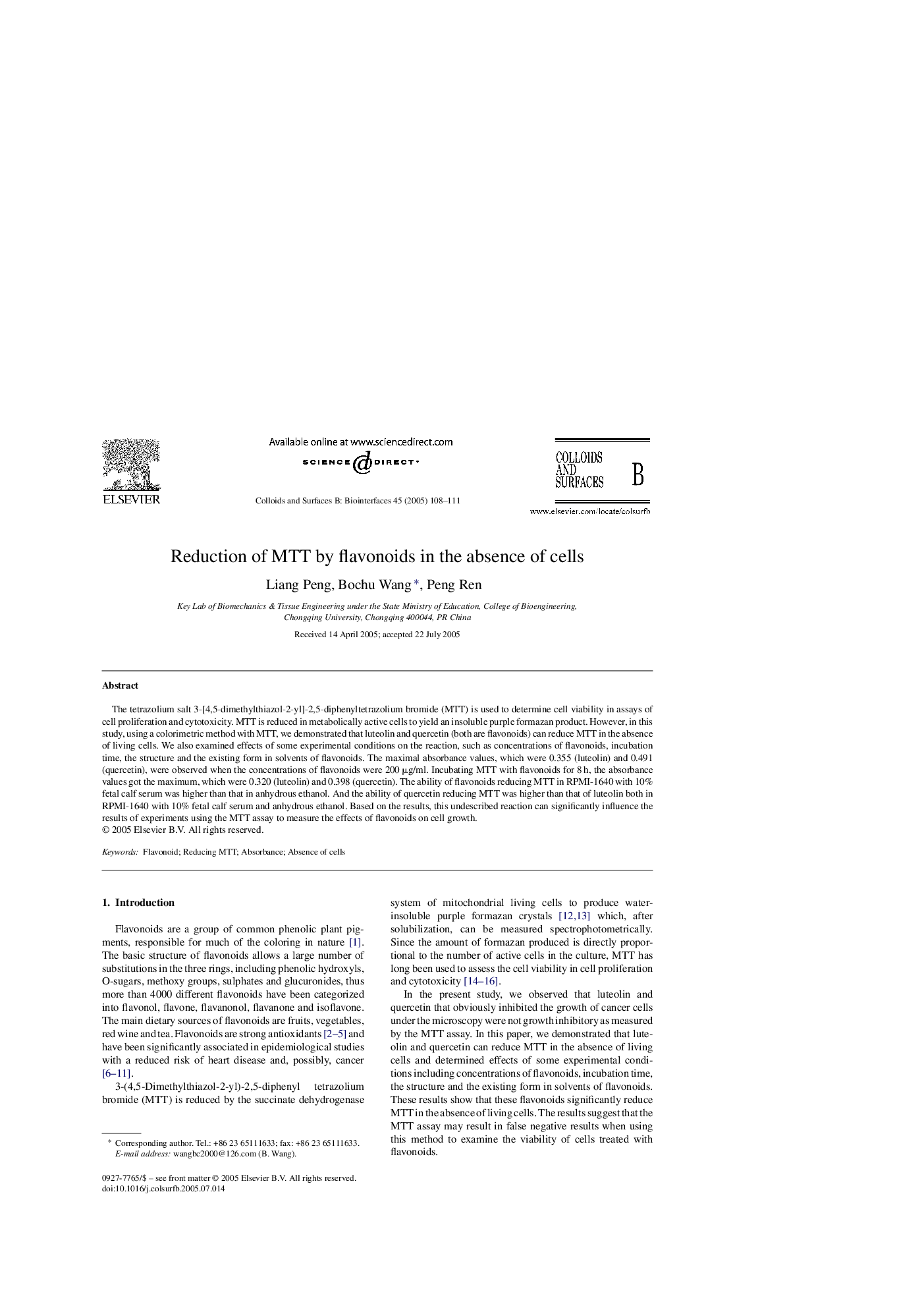| Article ID | Journal | Published Year | Pages | File Type |
|---|---|---|---|---|
| 10374980 | Colloids and Surfaces B: Biointerfaces | 2005 | 4 Pages |
Abstract
The tetrazolium salt 3-[4,5-dimethylthiazol-2-yl]-2,5-diphenyltetrazolium bromide (MTT) is used to determine cell viability in assays of cell proliferation and cytotoxicity. MTT is reduced in metabolically active cells to yield an insoluble purple formazan product. However, in this study, using a colorimetric method with MTT, we demonstrated that luteolin and quercetin (both are flavonoids) can reduce MTT in the absence of living cells. We also examined effects of some experimental conditions on the reaction, such as concentrations of flavonoids, incubation time, the structure and the existing form in solvents of flavonoids. The maximal absorbance values, which were 0.355 (luteolin) and 0.491 (quercetin), were observed when the concentrations of flavonoids were 200 μg/ml. Incubating MTT with flavonoids for 8 h, the absorbance values got the maximum, which were 0.320 (luteolin) and 0.398 (quercetin). The ability of flavonoids reducing MTT in RPMI-1640 with 10% fetal calf serum was higher than that in anhydrous ethanol. And the ability of quercetin reducing MTT was higher than that of luteolin both in RPMI-1640 with 10% fetal calf serum and anhydrous ethanol. Based on the results, this undescribed reaction can significantly influence the results of experiments using the MTT assay to measure the effects of flavonoids on cell growth.
Keywords
Related Topics
Physical Sciences and Engineering
Chemical Engineering
Colloid and Surface Chemistry
Authors
Liang Peng, Bochu Wang, Peng Ren,
